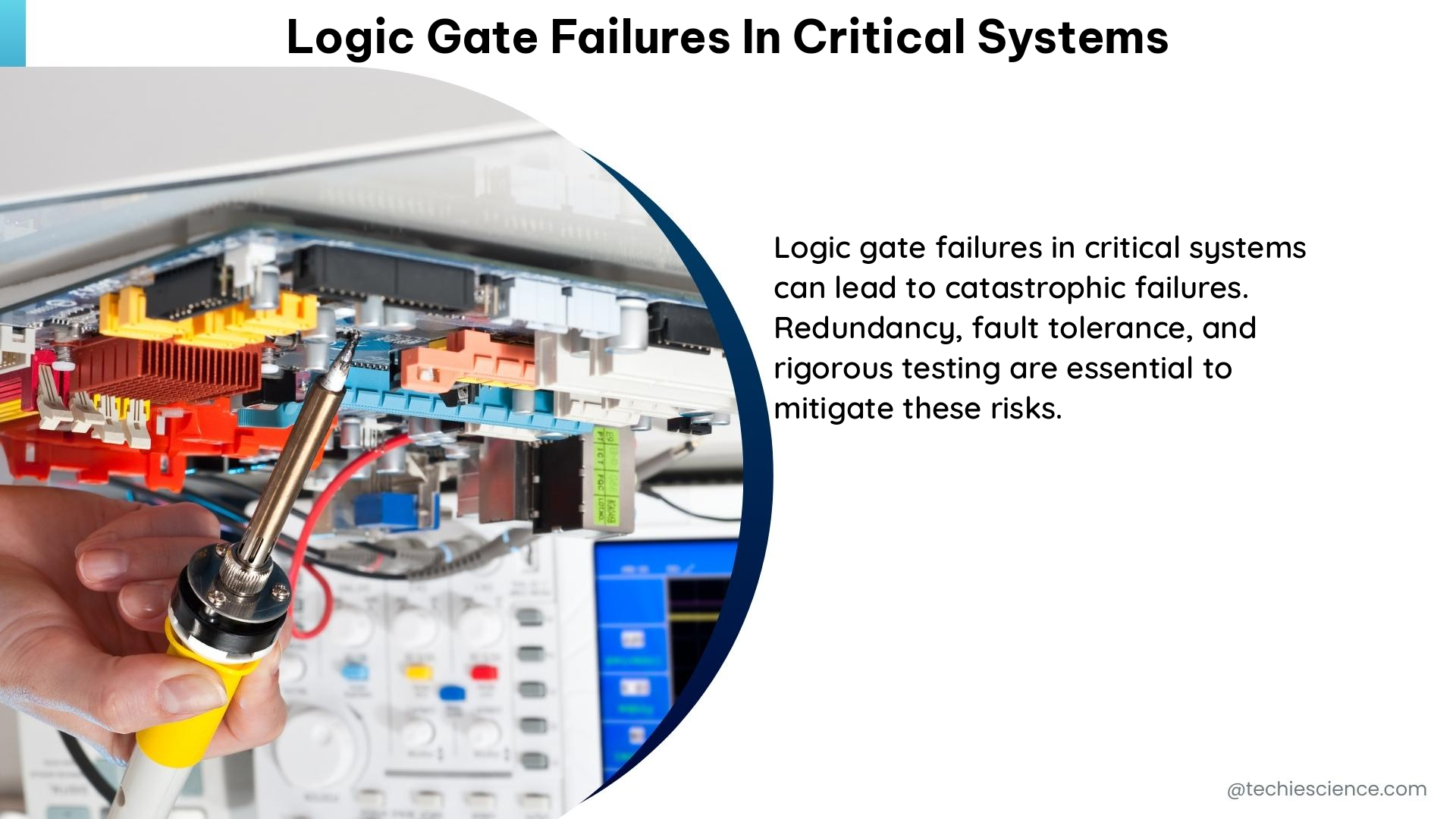Logic gate failures in critical systems can have severe consequences, leading to system-level failures and undesired events. Understanding and mitigating these failures is crucial for ensuring the reliability and safety of mission-critical applications. This comprehensive guide will delve into the intricacies of analyzing and addressing logic gate failures in critical systems, equipping you with the knowledge and tools to tackle these challenges effectively.
Fault Tree Analysis (FTA): Uncovering the Causes of System Failures
Fault Tree Analysis (FTA) is a powerful graphical tool used to explore the causes of system-level failures. By employing Boolean logic, FTA combines a series of lower-level events or components that could lead to the top-level event or undesired outcome. The key steps in FTA include:
-
Identifying Minimal Cut Sets: Minimal cut sets are the smallest sets of events that can cause the top undesired event. Determining these minimal cut sets is crucial for understanding the system’s vulnerabilities.
-
Calculating Probability of Minimal Cut Sets: By calculating the probability of each minimal cut set, engineers can estimate the probability of the top undesired event occurring.
Example: In a water pump system, the minimal cut sets could include valve failure, valve closed, fault indicator failure, control command failure, and operator error. Calculating the probability of each minimal cut set allows engineers to estimate the probability of water pump failure.
- Utilizing Logic Gates: FTA employs various logic gates, such as AND, OR, XOR, K/N, and INHIBIT gates, to represent the relationships between events. These gates help illustrate complex relationships and capture the interactions between the events and factors that contribute to the undesired event.
Failure Mode and Effects Analysis (FMEA): Proactive Evaluation of Potential Failures

Failure Mode and Effects Analysis (FMEA) is a systematic and proactive method for evaluating a system or product for potential failure modes and their effects. FMEA involves:
-
Identifying Potential Failure Modes: FMEA helps identify the potential failure modes, their causes, and their effects on the system or product.
-
Prioritizing Actions: FMEA can assist engineers and safety experts in prioritizing the actions needed to solve the problem, providing both qualitative and quantitative analysis.
-
Ensuring Accuracy and Effectiveness: To maintain the accuracy and effectiveness of FTA and FMEA, it is crucial to validate and verify the models, review the assumptions and data inputs, test the models against historical data or other sources of information, and communicate the results to stakeholders in a clear and concise manner.
Probability Calculations for Logic Gate Failures
The probability of the top undesired event occurring can be calculated using the following theorem:
Theorem:
P(top event) = 1 – ∏(1 – P(minimal cut set))
Where P(minimal cut set) is the failure probability of the minimal cut set.
Additionally, the probability of the OR gate output being 1 and the AND gate output being 1 can be calculated using the following formulas:
Electronics Formulas:
– P(OR output) = 1 – ∏(1 – P(input event))
– P(AND output) = ∏P(input event)
Where P(input event) is the probability of the input event.
Electronics Examples and Numerical Problems
Example 1: Series-Connected Components
A system has two components, A and B, connected in series. The failure probability of A is 0.05, and the failure probability of B is 0.03. What is the failure probability of the system?
Solution:
The failure probability of the system is the product of the failure probabilities of A and B:
P(system) = P(A) * P(B) = 0.05 * 0.03 = 0.0015
Example 2: Parallel-Connected Components
A system has two components, A and B, connected in parallel. The failure probability of A is 0.05, and the failure probability of B is 0.03. What is the failure probability of the system?
Solution:
The failure probability of the system is the sum of the failure probabilities of A and B minus the product of their failure probabilities:
P(system) = P(A) + P(B) – P(A) * P(B) = 0.05 + 0.03 – 0.05 * 0.03 = 0.0795
Numerical Problems:
-
A system has three components, A, B, and C, connected in series. The failure probability of A is 0.05, the failure probability of B is 0.03, and the failure probability of C is 0.02. What is the failure probability of the system?
-
A system has three components, A, B, and C, connected in parallel. The failure probability of A is 0.05, the failure probability of B is 0.03, and the failure probability of C is 0.02. What is the failure probability of the system?
-
A system has three components, A, B, and C, connected in a complex network. The minimal cut sets for the system are (A and B), (B and C), and (A and C). The failure probability of A is 0.05, the failure probability of B is 0.03, and the failure probability of C is 0.02. What is the failure probability of the system?
Figures, Data Points, and Measurements
Figure 1: Fault Tree Analysis Diagram
Data Point 1: Failure probability of A = 0.05
Data Point 2: Failure probability of B = 0.03
Data Point 3: Failure probability of C = 0.02
Measurement 1: Probability of the top undesired event = 0.0448
Measurement 2: Probability of the minimal cut set = 0.00045
Reference Links
- Introduction to Fault Tree Analysis – FunctionalSafetyEngineer.com
- SN74LVC1G11: AND gate: Functional Safety FIT Rate, Failure Mode Distribution for Safety System – TI E2E Community
- What is Risk Quantification? The Complete Guide – LogicGate

The lambdageeks.com Core SME Team is a group of experienced subject matter experts from diverse scientific and technical fields including Physics, Chemistry, Technology,Electronics & Electrical Engineering, Automotive, Mechanical Engineering. Our team collaborates to create high-quality, well-researched articles on a wide range of science and technology topics for the lambdageeks.com website.
All Our Senior SME are having more than 7 Years of experience in the respective fields . They are either Working Industry Professionals or assocaited With different Universities. Refer Our Authors Page to get to know About our Core SMEs.